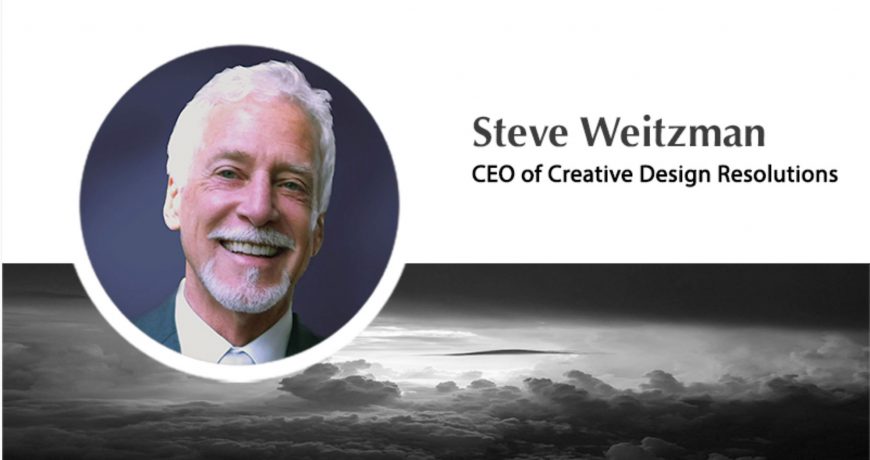
For Evolving Means of Transportation, the Community Takes the Wheel
(As seen in the July/Aug edition of American Infrastructure Magazine)
Good transit infrastructure should not only move people more efficiently but should also connect them back to the community
By Steve Weitzman
The highways and bridges of our country are commonly referred to as the “backbone” of our nation’s infrastructure. As of late, that backbone is failing. Auto traffic is hobbled at best and incapacitated. As a result, the ways that we traverse our cities are evolving at a rate not seen since the Industrial Revolution. From the introduction of ride-sharing services, such as Uber and Lyft, to the dramatic increase in the use of bicycles, electric scooters, and more, people are choosing alternative means of transportation.
As this evolution occurs, the question becomes, is our infrastructure’s design currently able to accommodate these changes? Is our future transportation infrastructure being designed for the slower and more personal ways that people are taking on their daily commutes?
The troubling fact that we are so far behind is offset by the unlimited possibilities for incorporating aesthetics, wayfinding markers, informational plaques, and other ways of communicating the personality, history, and desires of cities and their communities into the often plain concrete transportation infrastructure components. Concrete treatments are one of the more cost-effective ways of transforming the architecture and programming of these highways and bridges simply because concrete is one of the most flexible and inexpensive means of construction.
When it comes time to rebuild, community leaders need to keep this in mind. An increasing number of the projects that Creative Design Resolutions (CDR) has been tasked to design include pedestrian facilities, such as hike/bike paths, pedestrian bridges, and bridge decks. CDR’s designs for the La Cholla bridge in Tucson, AZ, include bike paths underneath the bridge as well as an aesthetically pleasing barrier-protected sidewalk that crosses the bridge deck. These types of designs are what communities need to ensure the safety of those choosing alternative means of transportation.
Rebuilding America’s infrastructure presents an opportunity for the public to take the wheel and demand bridges and highways that represent their respective communities. Infrastructure that moves beyond basic functionality and focuses on the community’s interests and experience results in the most successful projects.
Our goal is to enhance infrastructure, so why not put in the effort to make these structures attractive and personally meaningful to the community? It is increasingly important to be thoughtful about how these structures look, feel and are programmed for commuters. CDR’s design of the Lindsey Street Bridge in Norman, OK, provides a good example of thoughtfully programmed pedestrian facilities. The designs were influenced by input from stakeholders, including local communities, to help guide the aesthetic enhancements to the bridge and adjacent pedestrian bridge deck. Included are architectural designs mimicking the neighboring University of Oklahoma’s Cherokee Gothic style, patterned planters with local shrubs, and majestic panels representing the first president of the university, David Ross Boyd.
A common misconception is that the burden of cost for designs and aesthetic enhancements like these fall on taxpayers when much of the money needed for these architectural enhancements is already included in the budget for most projects. Moreover, these enhancements have the added benefit of increasing the property values of the surrounding community, thereby generating increased tax revenue to the city. In an interview with Fox 4 News, City of Dallas Council Member Lee Kleinman spoke about the Klyde Warren Park in Houston, TX, explaining how the addition of a pedestrian facility allowed the project to pay for itself through the additional tax revenue resulting from increased property values. This has become such a common occurrence that more cities are using Tax Increment Financing (TIF) to fund portions of their infrastructure rebuild projects. With TIF, the funds lent for these projects are collected and paid back as property values increase. For example, in Pompano Beach, FL, the City of Pompano Beach and Pompano Beach CRA are looking to redevelop 30 acres of urban downtown land that will include pedestrian facilities and major aesthetic enhancements mainly funded through TIF.
This is an opportunity to design safe, beautiful structures in cities’ civic centers and surrounding rural areas that tell the story of the community to commuters driving 65 miles an hour, and to others using slower moving modes of transportation. What a perfect opportunity to tell a more intimate story in a more articulated way to those who are able to stop and start whenever they choose, safely relax in respite areas, or traverse a bridge and learn about the area’s history or natural environment, before continuing on their way.
Now, the next time you see people zipping down the street on electric scooters, skateboards, or hoverboards, and more people walking around your cities and crossing your bridges, you may ask yourself: What do we want them to know about us?
Steve Weitzman is the CEO of Creative Design Resolutions. He may be reached at steven@creativedesignresolutions.com.
